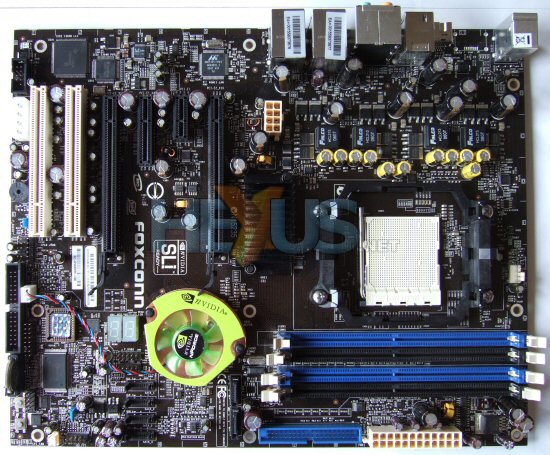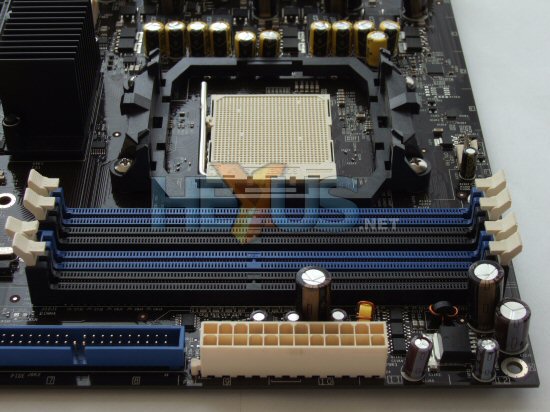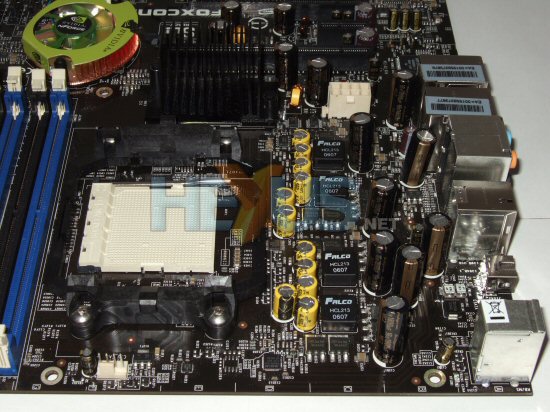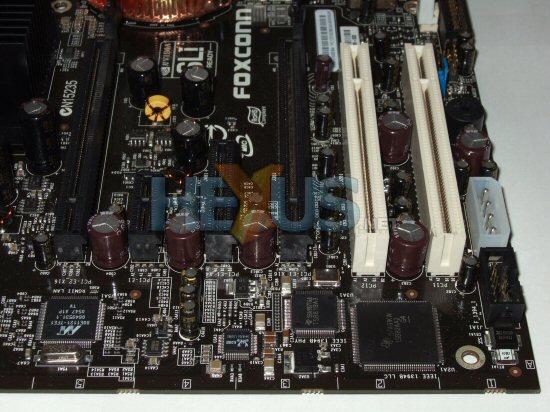Layout
Generally a pretty decent layout at first glance, but the location of the 8-pin SSI power connector and the 4-pin Molex connector near the bottom PCI slot give us cause for concern.
Notice how close the DIMM slots are to the CPU socket area. Although we experienced no failures during testing, the DIMM closest to the CPU got rather toasty due to the fact it's almost touching the CPU cooler. It's literally a millimetre of two of clearance (if that), depending on the cooler you use.
A generous six SATA2 ports adorn this area of the board, in addition to the useful onboard POST code display. The area of the board also accomodates the only free fan-header on the entire board (a large oversight in this reviewer's opinion), and it prevents the connection and monitoring of more than one chassis fan by the mainboard.
Also, all six SATA ports are of the non-latching (SATA1) style, and ports 1 through 4 are particularly close to the end of a long graphics card (such as a GeForce 7900 GTX) if one is installed. That can make the cabling for the SATA2 ports difficult to disconnect and reconnect.
The adoption of the 4-pin fan header first seen on Intel LGA775-based systems should allow for finer control of fan speed when under light loads, thus keeping noise to a minimum. AMD's PIB cooler for FX-62 and X2 5000+ use 3-pin connectors (which work), though.
The PEG16X slots flank single PCIe 1X and PCIe 4x slots (all in black), complimenting the pair of PCI 2.0 slots, giving rise to a well-balanced configuration that should suit most folks. We still await the plethora of promised expansion cards that use PCI Express, though, to make use of those provided 1X and 4X slots.
And like most boards, a dual-slot graphics board in that bottom PEG16X slot will render the nearest PCIc slot useless.














